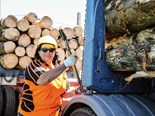Comment: Road to Zero
The Road to Zero strategy focuses more on reducing speed than getting the fundamentals of the transport network right, says WiRT's Meryn Morrison
Zero means nil, none, nada. In the health and safety world that I spend much of my time in, we all know that zero accidents or fatalities is a false God. As hard as we try, the reality is that it will never happen.

The problem is humans are inherently fallible and will consciously or subconsciously exploit latent opportunities to cut corners that inevitably result in an accident. A nice catchphrase like ‘road to zero’ will not change that.
I would like to propose we get rid of the ‘zero’ mentality and focus on the outcomes for people when something does go wrong. Maybe coin it ‘Fail Safely’ if we really must have a bumper sticker slogan.
The reality is that many influences come together to make an accident happen. This is called multi-causal in the ‘accident’ world and as with the ‘fire triangle’ that requires an ignition source, fuel and oxygen to make a fire, so a road accident requires a few things to come together to make a serious accident. Governments should first and foremost focus on reducing the influence from the factors that they have some control over.
If we think human behaviour is going to change because we put in an 80kph speed restriction where it used to be 100kph, then we are wrong. Modern road designs with a high standard of maintenance on the other hand are controllable and will go a long way to making roads safer no matter how people drive on them.
I recommend having a look at Dr Todd Conklin on YouTube for someone who talks real sense in this area.
He argues that focusing on one thing like speed or road conditions is a bit flawed, as an improvement in the road toll and overall accident rate requires a multi-facetted approach. From my perspective, I’d love to see more emphasis put on driver education and equipping new drivers with the right skills to help them prevent accidents.
When it comes to the state of our roads, a real bugbear of mine is the deep drainage channels that lie just off the roadway. These don’t allow much of a mistake and severely punish drivers who do. I don’t know why we can’t cover these over so that when you run off you have a chance to catch yourself, settle your heart rate down and carry on unharmed.
Another problem I have is with the cheese graters and unbending barriers that line our highways and that the Government has promised more of. I do not believe they absorb the shock as well as they could.
The advance in safety features on vehicles themselves are amazing, especially in some brands of cars and trucks with crumple zones, underrun protection, side impact beams, proximity cameras, airbags, and automatic braking. Unfortunately, road engineering in this country hasn’t kept up and when compared to similar roading networks overseas, is in a very sorry state.
Our politicians don’t seem to get that what we need is a major programme of highway building and roading improvements that will take many years and many billions of dollars. The Government has significantly increased road user charges and petrol excise, yet there is no sign that they are willing to put this back into our roads to protect the very people they take it from.
Unfortunately, there are no new roads in the pipeline. Instead, the focus seems to be on reducing speed and pushing people and freight on to rail. Meanwhile, the fundamentals of the transport network like modern, safe roads and a driving population that have the necessary skills to cope with them are largely being ignored.
Keep up to date in the industry by signing up to Deals on Wheels' free newsletter or liking us on Facebook.




.jpg)


.jpg)









